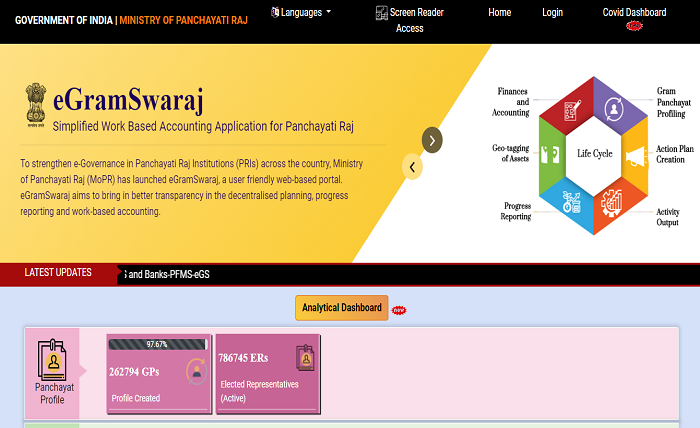eGramSwaraj-4: Empowering Rural India through Digital Transformation

In today’s increasingly digital world, the need for rural development and inclusion has become more crucial than ever. One initiative that is actively bridging the digital divide and empowering rural communities in India is eGramSwaraj-4 (eGS4). This ambitious project aims to leverage technology to transform villages into self-reliant and digitally empowered entities.
Evolution of eGramSwaraj:
eGS4 is the latest iteration of the eGramSwaraj program launched in 2006. The initial stages focused on providing basic infrastructure like internet connectivity and computers to Gram Panchayats (village councils). However, eGS4 takes a more comprehensive approach, aiming to create a robust digital ecosystem within villages.
Key Components of eGS4:
- Enhanced Connectivity: eGS4 ensures high-speed internet connectivity through BharatNet, a national optical fiber network. This robust connectivity facilitates the delivery of various e-governance services and online applications.
- Digital Infrastructure: The project provides Gram Panchayats with necessary hardware like computers, printers, and scanners. This infrastructure enables them to efficiently manage their administrative functions and deliver services to citizens.
- Human Capital Development: eGS4 emphasizes training and capacity building for Gram Panchayat officials and rural citizens. This empowers them to utilize the technology effectively for various purposes.
- E-Governance Services: eGS4 facilitates the delivery of various e-governance services like online registration of births and deaths, property tax collection, and issuance of certificates. This enhances transparency and reduces bureaucratic delays.
- Digital Literacy: The project promotes digital literacy among rural citizens through various awareness campaigns and training programs. This empowers them to access and utilize various online services and information.
Impact of eGramSwaraj-4:
eGS4 has significantly impacted rural development in India in several ways:
- Improved Transparency and Governance: eGS4 has brought greater transparency and accountability to the functioning of Gram Panchayats. The online availability of information and services reduces the scope for corruption and improves decision-making processes.
- Enhanced Service Delivery: Citizens can now access various government services online, saving time and effort. This improves the efficiency and effectiveness of service delivery within villages.
- Promoting Digital Inclusion: eGS4 has played a crucial role in bridging the digital divide and empowering rural communities. It has provided access to information, communication, and online services to even the remotest villages.
- Empowering Women: eGS4 has particularly benefited rural women by providing them with access to information and services related to healthcare, education, and livelihood opportunities.
- Boosting Rural Economy: The project has facilitated the growth of digital entrepreneurship and e-commerce in rural areas. This has created new opportunities for income generation and economic development.
Challenges and Future Roadmap:
Despite its significant achievements, eGS4 faces certain challenges that need to be addressed for sustainable development:
- Unequal Access: Despite improved connectivity, there are still disparities in internet access across different regions and communities. Addressing this digital divide is crucial for achieving inclusive development.
- Digital Literacy Gap: While eGS4 promotes digital literacy, many rural citizens still lack the skills to fully utilize technology. Bridging this gap is essential for maximizing the benefits of the project.
- Sustainability: Ensuring the long-term sustainability of eGS4 requires continuous monitoring, evaluation, and capacity building of Gram Panchayat officials.
Moving forward, there are several initiatives planned to further enhance the impact of eGS4:
- Integration with other Government Schemes: eGS4 will be integrated with other government schemes like eNAM (National Agriculture Market) and PMGDISHA (Pradhan Mantri Gramin Digital Saksharta Abhiyan) to create a holistic development framework.
- Focus on Skill Development: Increased emphasis will be placed on skill development programs that equip rural youth with the necessary skills to thrive in the digital economy.
- Promoting Innovation and Entrepreneurship: eGS4 will encourage the development of innovative digital solutions to address local challenges and promote rural entrepreneurship.
Conclusion:
eGramSwaraj-4 is a transformative initiative that has empowered rural communities in India by bridging the digital divide and creating a robust digital ecosystem. By addressing remaining challenges and focusing on future initiatives, eGS4 has the potential to further accelerate rural development and ensure a more inclusive and prosperous future for India.




